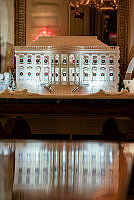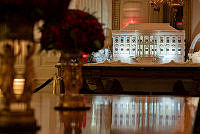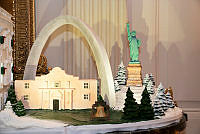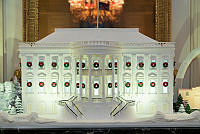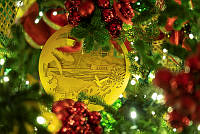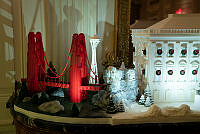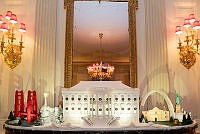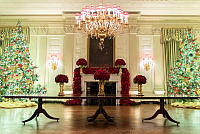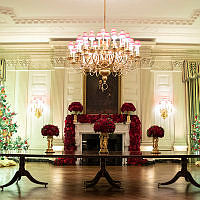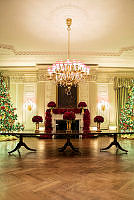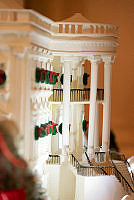Warren G. Harding Funeral
August 8, 1923
Copyright © White House Historical Association. All rights reserved under international copyright conventions. No part of this article may be reproduced or utilized in any form or by any means, electronic or mechanical, including photocopying, recording, or by any information storage and retrieval system, without permission in writing from the publisher. Requests for reprint permissions should be addressed to books@whha.org
The stunning news of President Harding's death came to the White House by telephone on August 2, 1923. The president had fallen ill and died suddenly of a heart attack in San Francisco while on a tour of the western states. Floral tributes—bouquets, crosses, wreaths, anchors of hope and many other traditional symbols of mourning—began to arrive as soon as the florists opened on August 3. The funeral train pulled into Union Station at 10:30 p.m. on a hot, still August 7. An honor guard transported the coffin without notice from the presidential car to an automobile and then onto the White House. Harding's body was placed in the East Room and was viewed by Mrs. Harding, close friends, and relatives. At ten o'clock the following morning, the coffin was again mounted on the caisson and taken in a long and somber procession to the Capitol where the funeral service was held before the Congress, the Cabinet, and a group of invited dignitaries. At the conclusion of the service the public was admitted to the rotunda to view the silvery metal coffin resting on the same catafalque used for President Lincoln. It was adorned with a flag and a spread eagle made with red, white, and blue flowers that had been designed by Florence Harding. Later that afternoon the funeral train departed for Marion, Ohio, where a final funeral service was held on August 10, 1923. Harding's body was placed in a temporary vault until 1927 when it was moved to the newly constructed Harding Memorial dedicated by President Herbert Hoover in 1931.

Mourners kneel in prayer on the north drive outside the East Room where President Harding lies in state, 1923.














